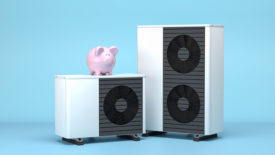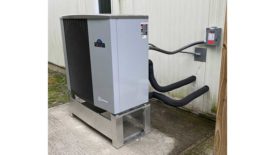John Siegenthaler: Hydronics Workshop
John Siegenthaler gives a technical view of hydronic and radiant heating systems.
ARTICLES
Hydronics Workshop | John Siegenthaler
Is it worth it?
Read More
Hydronics Workshop | John Siegenthaler
Options for connecting heat pumps to existing boiler systems
Tie ins
February 1, 2024
Hydronics Workshop | John Siegenthaler
The ‘ins’ and ‘outs’ of thermal storage
Hydronic systems stand ready to offer performance benefits as electrification movement advances.
January 2, 2024
Hydronics Workshop | John Siegenthaler
A simple, repeatable and scalable approach to hydronic distribution
This one works…
November 30, 2023
Hydronics Workshop | John Siegenthaler
What’s possible with hydronics and heat pumps?
Combined elements — part two
November 1, 2023
Hydronics Workshop | John Siegenthaler
Creating a complete system to provide space heating, cooling, DHW and fresh air ventilation
Combined elements
October 2, 2023
Hydronics Workshop | John Siegenthaler
There are still viable applications for solar thermal technology
Sōl Survivor
August 31, 2023
Hydronics Workshop | John Siegenthaler
Relays and switches — part two
Building the brains for custom hydronics systems.
August 1, 2023
Column | John Siegenthaler
John Siegenthaler: Relays and switches — part one
The basics.
July 3, 2023
John Siegenthaler: Extended manifold systems
Less tubing, less drilling, less fastening.
June 1, 2023
Get our new eMagazine delivered to your inbox every month.
Stay in the know on the latest plumbing & piping industry trends.
SUBSCRIBE TODAY!Copyright ©2024. All Rights Reserved BNP Media.
Design, CMS, Hosting & Web Development :: ePublishing










